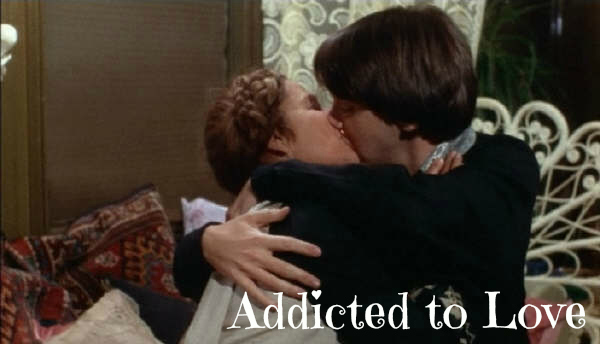 In many ways HAROLD AND MAUDE fits a conventional romantic comedy mould. Boy (Harold) meets Girl (Maude). Boy falls in love with Girl. Boys’ family disapprove. Boy pursues Girl anyway… but that’s where the similarities break down. For starters, Girl doesn’t love Boy back (at least, not in that way) and then there’s the age difference. Harold is in his twenties whereas Maude is well into her autumn years.
In many ways HAROLD AND MAUDE fits a conventional romantic comedy mould. Boy (Harold) meets Girl (Maude). Boy falls in love with Girl. Boys’ family disapprove. Boy pursues Girl anyway… but that’s where the similarities break down. For starters, Girl doesn’t love Boy back (at least, not in that way) and then there’s the age difference. Harold is in his twenties whereas Maude is well into her autumn years.
The unlikely pair meet at the funeral of a mutual stranger. Both are regular funeral attendees, yet for completely opposite reasons. Harold is depressed and stifled in a well-to-do, controlling family who attempt to smother any form of individuality Harold might show. This results in macabre forms of protest and obsession in Harold. Harold, for all intents and purposes, is a Goth without the white make-up. He stages fake suicides in various creative ways in front of his mother, drives a hearse and scours the obituaries for services to attend. Maude, on the other hand, sees the funerals as a celebration of life, as a part of its cycle no different to a marriage or a birthday.
Maude, who has known unimaginable tragedy, embraces the state of being…
Harold, who is too young to have lived much yet, finds no enjoyment or purpose in life. Maude, who has known unimaginable tragedy, embraces the state of being and finds great beauty in each given moment. Harold is drawn to Maude because she takes the time to see and appreciate his individuality and through her eyes he learns, slowly, to appreciate himself and to celebrate the world around him.
This film, written by Colin Higgins and directed by Hal Ashby in 1971, was a commercial and critical disaster at the time but in subsequent years has gained significant momentum. Such momentum that it is now considered by the AFI to be one of the best American comedies of all time. Ashby’s editing background is of definite advantage to the film. It is punchy when it needs to be and languid at other moments. Both leads give phenomenal performances and Ashby cuts back Higgins’ script to great effect. The minimalist dialogue in certain scenes (the scene in which Harold and Maude watch the sun set together is a wonderful example) allows for greater poignancy.
This film is romantic, not in a rigid two-person way but in a much broader, all encompassing sense of the word. It is about remembering the romance of life itself and so married, single or other, it is a romance we can all take part in.
httpvh://youtu.be/5mz3TkxJhPc

